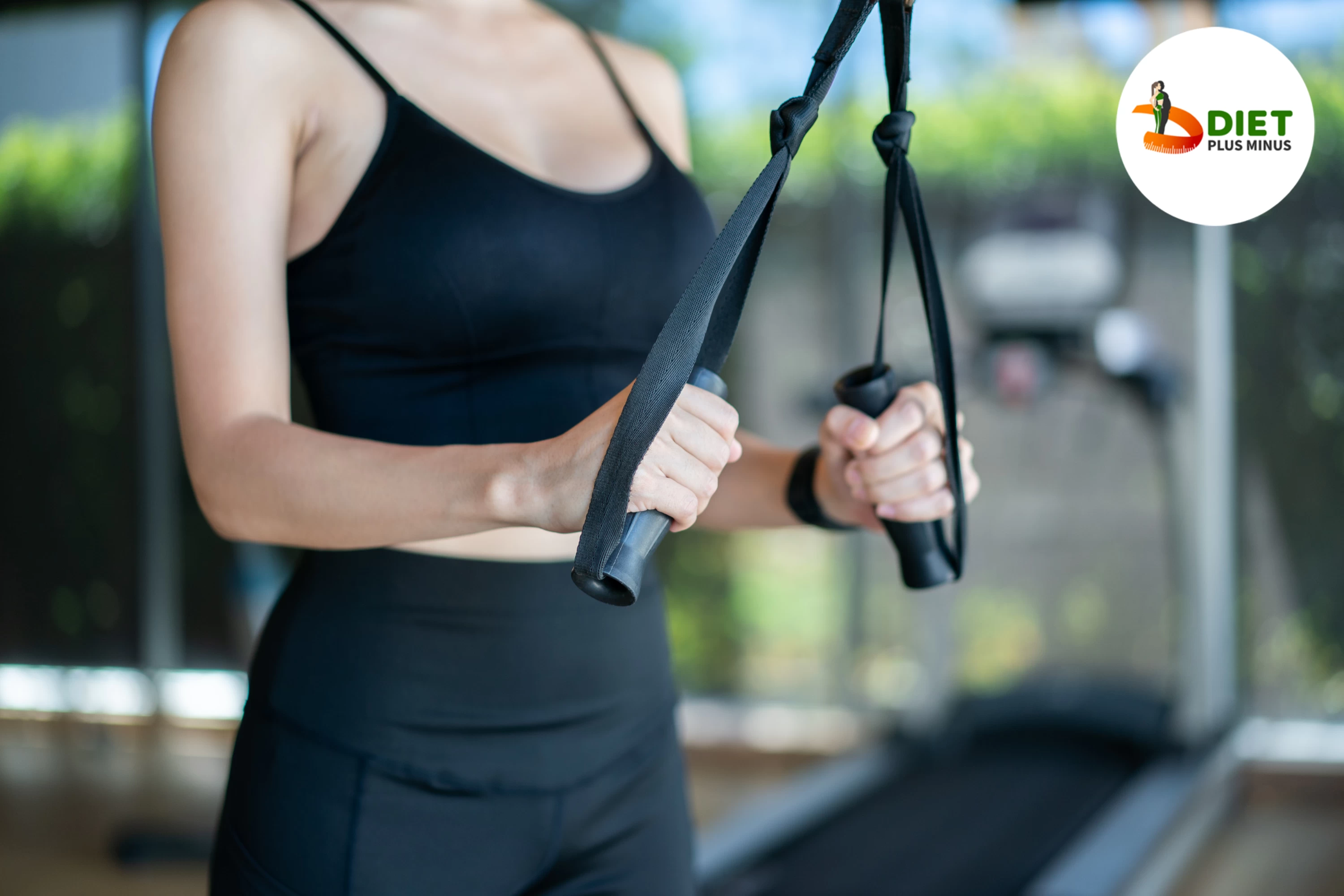Triceps: Seated triceps extensions

Seated Triceps Extension Benefits
Seated triceps extensions work the triceps. They work all three triceps heads and can be done seated, making them ideal for back and knee problems. Sitting helps maintain form during exercise. Seated triceps extensions improve posture, strength, muscle definition, range of motion, and stability during push-ups and dips. This exercise strengthens and balances the shoulder joint, reducing shoulder pain. Since seated triceps extensions strengthen the arms, they can also improve your performance in other sports like swimming and tennis. Finally, they can be done at home with just a chair or bench and weights (dumbbells or resistance bands).
Form/Technique
Sitting triceps extensions require proper form. Sit upright on a bench with an exercise weight in each hand. Place your feet flat on the floor, chest up, and arms above your head with palms facing each other. Inhale as you slowly lower the weights to either side of your head until elbows are shoulder-level or slightly below. Maintain torso stability and don't hunch shoulders. Exhale and push the weights up until your arms are straight again, engaging triceps for maximum benefit. Slow movement and elbow pushing will help target triceps. Best results with moderate weight and 3 sets of 10-12 repetitions.
Targeted Muscles
Seated triceps extensions work the triceps. This dumbbell or cable machine exercise can be done seated on an incline bench or standing. This exercise strengthens your upper arm triceps. Sitting tall with your feet on the floor, perform the seated triceps extension. Hold a dumbbell behind your head with bent elbows. Slowly extend both arms straight above your head, keeping your elbows stationary. After fully extending, lower the weight to the starting position and repeat 8-12 times to finish one set. Maintain proper form throughout each repetition to maximise effectiveness and avoid injury. Strength and muscle size will improve quickly with consistent practise!
Variations
Different seated triceps extensions exist. First, reverse-grip triceps extension. The user grips the bar with their hands facing away and pushes it up to the ceiling to work their triceps. Cable tricep extensions use cable machines instead of barbells. A third variation is an overhead pulley press, which is similar to a triceps extension but requires two handles on either side of your head to extend your arms. Finally, single-arm extensions with dumbbells or cables add resistance. These variations target different muscles to maximise your workout.
Alternatives
1. Sit in a chair or bench with your feet flat on the floor and hold one dumbbell behind your head for seated triceps extensions. Your elbows should point forward and be bent 90 degrees. Exhale and lift the weight until your elbows are straight but not locked out. Inhale and slowly lower the dumbbell. Dumbbell weight and repetitions can adjust resistance.
2. Use bands instead of weights for seated triceps extensions. Bands come in different resistance levels, so you can choose one that matches your level or increase as you get stronger to avoid injury while still challenging yourself enough to see results. Use bands like dumbbells by tying them to a stable object like a pole or post and extending and contracting your arms against their tension until all reps are done for that set.
3. Tempo control is a third way to adjust resistance by controlling how fast or slow you lift and lower weights during repetitions and rest periods.
Safety Tips
Triceps extensions should be done properly. The movement should be done with elbows close to your body and hands shoulder-width apart. Avoid overextending your arms when lowering the weight and maintain control when lifting it. To maximise your workout, keep tension on your triceps throughout.
Avoid locking out your elbow at the end of each triceps extension rep. Repeatedly doing this can strain ligaments and cause injury. Keep a slight bend in the elbow joint even at full extension to maintain tricep muscle tension without stressing other body parts.
Finally, proper breathing during triceps extensions ensures form and safety. Take deep breaths through your nose and exhale through pursed lips as you lower weight and slowly extend back up (eccentric contraction). Deep breaths oxygenate muscles and stabilise core strength, reducing exercise-related injuries.
Conclusion
Triceps exercises should be varied and effective. Overhead, reverse grip, and cable kickback seated triceps extensions can achieve this. Variation in your exercises improves muscle recruitment and gives you the psychological boost of trying something new. Alternating between weighted and bodyweight exercises increases strength and prevents overuse injuries. Variety and effective technique help fitness enthusiasts reach their goals safely and effectively.
In Short:
Steps involved:
- Simply sit on a bench and hold a dumbbell with your boh hands. Raise the dumbbell overhead at arms length, holding the dumbbell up with your palms.
- Try to keep your elbows in while lowering the weight behind your head towards your upper back, and keep your upper arms stationary while performing this motion.
- Raise the weight back at the initial position.
Do’s:
- Keep your ribcage down.
- Maintain tension in your abs and glutes.
- Perform the exercise in a controlled manner.
- Focus more on reps rather than focusing on weight.
Don’ts:
- Don’t allow the neck to fall forward as it may cause spine injury.
- Do not overstrain your muscles.
